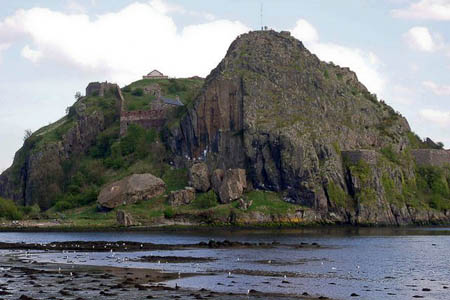Climbing routes on one of Scotland’s toughest crags has been preserved during a spruce-up to remove graffiti.
Dumbarton Rock is home to Dave MacLeod’s E11-graded Rhapsody, the hardest rock-climbing route in Britain.
A row erupted last summer over plans to clean graffiti off the extinct volcano on the north bank of the Clyde.
But after consultation with the Mountaineering Council of Scotland, climbers’ representatives said they were happy with the work carried out to remove the unsightly scrawls on the rockface.
Andrea Partridge, access officer for the Mountaineering Council of Scotland said: “Dumbarton Rock is recognised throughout the international climbing community as having some of the hardest climbing and boulder problems and it has played a significant role in the development of climbing.
“The MCofS is pleased to be working in co-operation with Historic Scotland and local climbers to improve the appearance of the area.
“Through close liaison with the contractors we ensured that the climbing heritage was protected and safety for all users is improved.”
The rock is a historic site as well as being a Mecca for climbers.
Dumbarton Rock is of national importance because it has one of the longest recorded histories as a stronghold in Britain. Over the centuries, the volcanic rock has played a key role in the country’s history having acted as a natural fortress location.
The graffiti removal is part of Historic Scotland’s work to look after the ancient setting of the rock and contribute to a more pleasant environment for those using the area.
The clean-up was carried out using methods that will not damage the rock and ensure its natural appearance is restored.
Joann Russell, Historic Scotland’s head of conservation for the south region, said: “Dumbarton Rock is a major landmark and focal point for the local community. It also has a significant place in Scotland and Britain’s history.
“Despite its protection in law, it has not deterred graffiti defacing the rock. This has become an issue for us and, understandably, it is a concern for the local community.
“We are committed to protecting the rock and ensuring its natural look is restored in a sensitive manner that will not affect the rock’s fabric. This work will contribute to the improvement of the area’s appearance and make it a more enjoyable place to visit.”
